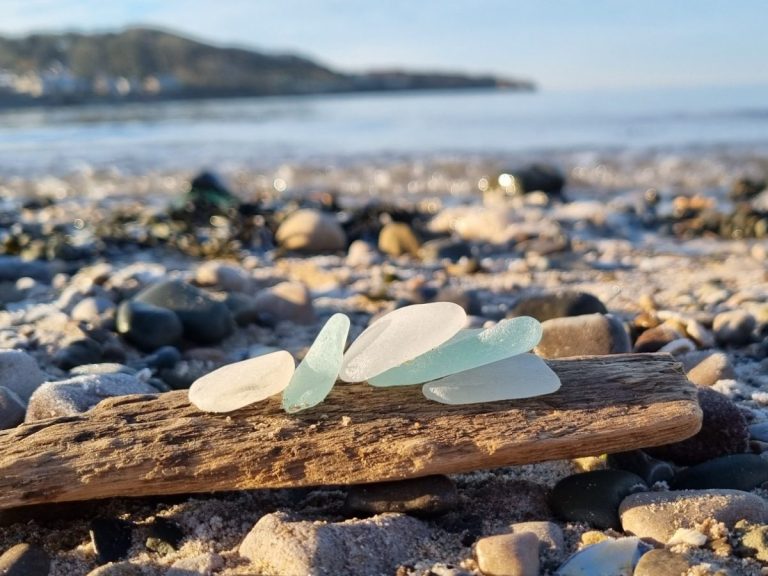
What is Sea Glass?
Shimmering secrets: The captivating history of sea glass
Sea glass, also known as beach glass or mermaid's tears, is a captivating treasure that has a rich history intertwined with the vast oceans. It is formed when discarded glass, such as bottles or jars, find their way into the sea.
Over the course of many years, the relentless movement of the waves, combined with the abrasive effects of sand and rocks, transforms these shards of glass into smooth and frosted gems.
It is thought to take 20-40 years for glass to become smooth and frosted, but can take as much as 200 years!
Different types of Sea Glass
It is suggested that 90% of the glass washed up on the beaches was once a glass bottle, hence the reason why colours such as red and orange are rare to find. There are a variety of different types of sea glass that are rare that are truly amazing.

Safety Glass, popular from Georgian times was most commonly used in industrial settings. The glass was made with a wire mesh inside, which meant it was less likely to pose a threat when broken.

Bonfire Glass, also sometimes known as campsite glass, is glass which has been heated so hot it melts and loses its original shape. Due to the fact it has been rolled around in the sea so much, it's unlikely you will find a smooth piece.

Sun-purpled / Amethyst Glass gets its lilac hues from the affect of ultraviolet (UV) light on the chemicals in the glass. The amount of Manganese dioxide present in the old glass bottles determines how dark the purple becomes.

Flash Glass is ultra rare glass. This glass was once made for decorative purposes such as Victorian Art Glass and tableware. The glass was layered up starting with clear at the bottom moving onto one or more thin layers of coloured glass. One of the common uses of flash glass is stained-glass windows.
UV Glass is elusive as it is only identified by the glow it gives under UV light. The ingredient responsible is uranium, only trace amounts are needed for the illumination, but the brighter the glow, the higher the content.


Pirate Glass is another term for black glass, due to its origin from old Rum bottles. Even though it might not be as rare as other colours, it's certainly difficult to find pirate glass due to its likeness to rocks and pebbles on the beach. The way to tell if you have a piece of pirate glass is to hold it up to the Sun to see if it shines through.

Multis are the most elusive of all sea glass, and are only found on the North-East coast, around Seaham. The old glass factory in the seaside town used to discard waste glass off the cliffs at the end of each day, often fusing all the scraps together first. These have now rounded into the most beautiful jellybeans.

Privacy Glass was given its name as it was used to obscure the view, mainly of windows. An embossed image diffuses the detail whilst still allowing light through. Patterned window-panes date back to Victorian times and come in many different designs. Also known as Plate Glass, it was developed by the Chance Brothers in the 1880's.

Bottle shapes are fairly common as most sea glass comes from discarded bottles. However, bottle stoppers and Codd marbles are rare finds on any beach, sturdy enough to not have been broken in the surf, but perfectly frosted too.

Text and markings on sea glass are always intriguing. From advertising logos to makers marks, the game becomes trying to figure out the origin.
© Copyright. All rights reserved.
We need your consent to load the translations
We use a third-party service to translate the website content that may collect data about your activity. Please review the details and accept the service to view the translations.
